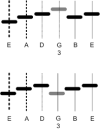OK, a couple of things to report:
First, I would also generally suggest that you try to use your neck pickup and turn the tone control down all the way when doing intonation. What I was taught is that this helps to eliminate some of the higher harmonics that the tuner can see, and which might throw it off a little.
The Turbo tuner did great, and was indeed registering some changes that the Peterson had not. Or else it was just easier to read. I'd forgotten I even had that tuner, tucked away in a guitar case pocket.
However, the difference made by the two different capos (one really soft, one really pressing hard) was much less than even the changes I could make just by rotating my fretting finger ever so slightly.
So from the sample size of 1 (take it with a shaker of salt), on this guitar with these strings, the difference between capos seems to be down in the noise of all the other variables.



